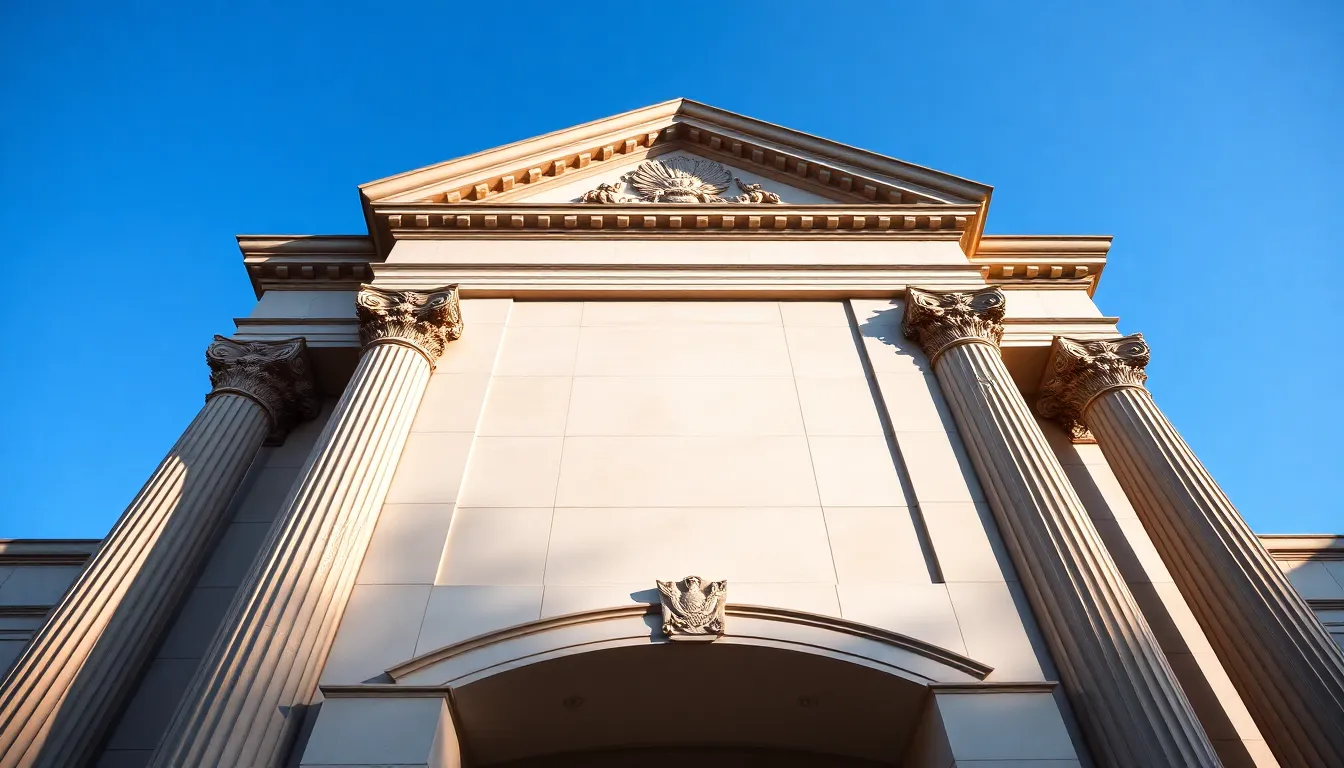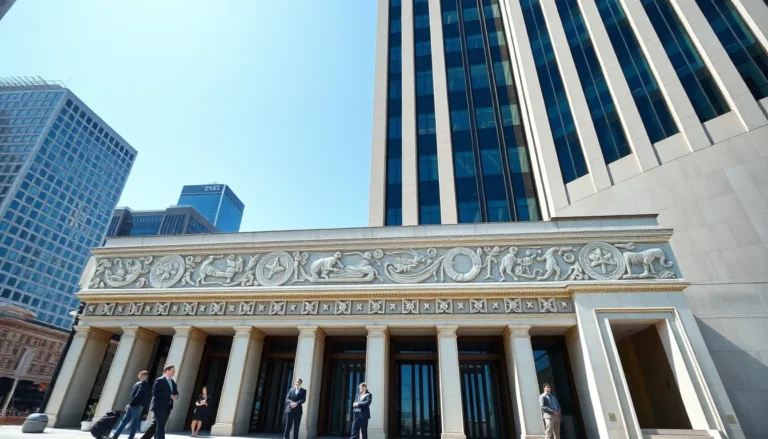Table of Contents
ToggleImagine walking through a city where every building tells a story. The towering structures not only house shops and homes but also carry the weight of design traditions that date back centuries. At the forefront of these architectural narrators are pediments, those charming triangular features that grace the tops of doors and windows, like a crowning achievement. Whether you find yourself gazing up at a grand temple or a quaint library, these architectural wonders beg the question: What’s the real story behind them? Buckle up as we dive deep into the world of pediment architecture, complete with historical tidbits and a few laughs along the way.
Understanding Pediments

Pediments are more than just decorative elements: they serve as important architectural features that form a triangular shape, often found above doorways or windows. Typically, they sit atop columns in classical architecture, symbolizing strength and support. In many ways, they act as a visual bridge, connecting the structure’s functional and aesthetic aspects. This harmonious blend of form and function is what makes pediments noteworthy. They range from simple and unadorned to elaborately detailed, depending entirely on the architectural style and the time period in which they were constructed.
Historical Context of Pediment Architecture
The history of pediment architecture traces back to ancient Greece, where they were prominently featured in temples and public buildings, symbolizing the grandeur of the civilization. Structures like the Parthenon showcase how this architectural element was not merely for ornamentation but also served practical purposes in the design. As architecture evolved, Roman adaptations made their own mark by incorporating pediments into grand civic buildings, signifying power and authority. Fast forward to the Renaissance, and you’ll find rebirths of these classical forms, now adapted to fit the needs of churches and palaces. Each era added its unique flavor, embellishing pediments with sculptures, reliefs, and other artistic representations, demonstrating how these structures capture the spirit of their time.
Types of Pediments
A variety of pediments exist, each with its distinct characteristics. The triangular pediment is the most recognized form, embodying simplicity and elegance. Meanwhile, segmental pediments offer a softer curve instead of a strict triangle, often seen in more modern interpretations. Broken pediments introduce an exciting twist by appearing as though they have cracked open, allowing for unique design opportunities. You might also encounter curvilinear pediments, which feature intricate, flowing shapes, often lending a whimsical touch to the architecture. Each type serves different aesthetic or functional needs, proving that variety is not just the spice of life, it’s also key in architecture.
Architectural Significance
Pediments hold substantial architectural significance beyond their decorative allure. They contribute to the overall balance and proportionate aesthetics of a building. A well-designed pediment can create a focal point, drawing the eye upward while enhancing the perceived height of the structure. Pediment Design Elements are crucial to achieving this effect. Elements such as columns, sculptures, and even inscriptions often embellish the pediment, complementing the building below. This synergy is what makes pedimental design both challenging and rewarding for architects.
Symbolism and Functionality
Symbolically, pediments often portray themes that resonate with the building’s purpose. For instance, civic buildings might feature allegorical figures representing justice or wisdom, aiming to inspire visitors. This functionality goes deeper, as pediments historically served practical purposes, such as providing a sloped surface for water runoff. Although modern materials and engineering practices have addressed functional needs, the symbolic aspect remains a vital part of their contemporary identity.
Modern Applications of Pediment Architecture
Today, architects and designers continue to incorporate pediments into new constructions and renovations, adapting this classical element to meet modern tastes and styles. From traditional buildings maintaining their historical integrity to cutting-edge designs embracing minimalism, the versatility of pediments allows for creativity across various architectural forms. They also serve as a reminder of the past in modern urban environments, linking contemporary designs to their historical roots. Much like a well-tailored suit, a modern building can be dressed up with a stylish pediment, adding character and individuality.







